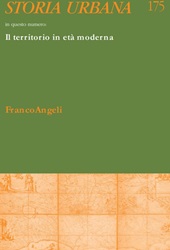Décrire l'espace, écrire un territoire : le Dauphiné-Savoie dans le Recueil et abbregé (1547)
P. 19-37
Il Recueil et abbregé de certaines choses concernans le gouvernement des pays de Daulphiné et Savoye è un manoscritto anonimo della metà del XVI secolo che offre una descrizione dello spazio del Delfinato e della Savoia per il nuovo governatore francese, François de Lorraine. Inserito nel contesto delle guerre d'Italia, che videro la conquista e lo smantellamento del Ducato di Savoia, esso ci permette di avvicinarci al modo in cui un territorio originario poté essere costituito e individuato in età moderna. Come oggetto, il Recueil et abbregé appare come una sistemazione intellettuale del territorio del Delfinato-Savoia, offrendo all'occhio del governatore una visione dall'alto del territorio su cui esercita la sua autorità.
La caratteristica principale di questo progetto è l'unione di due entità, che interrompe diversi secoli di antagonismo. L'esistenza del Delfinato-Savoia viene così affermata, rappresentata e giustificata. Questo discorso è stato abbinato all'individuazione di alcune caratteristiche specifiche del territorio, che hanno contribuito alla sua definizione, delineando sulla carta un territorio singolare, uno spazio di apertura e chiusura al servizio dei Valois e delle loro ambizioni italiane. Ma questa costruzione intellettuale si realizzò malgrado le circostanze e il Delfinato-Savoia divenne un territorio contrastato, un progetto politico senza una vera applicazione pratica sul terreno e al quale la restituzione della Savoia con il trattato di Cateau-Cambrésis nel 1559 pose definitivamente fine. [Testo dell'editore]
The Recueil et abbregé de certaines choses concernans le gouvernement des pays de Daulphiné et Savoye is an anonymous manuscript from the middle of the 16th century that offers a description of the Dauphinois and Savoyard space for the new French governor, François de Lorraine. Set in the context of the Italian wars, which saw the conquest and dismemberment of the Duchy of Savoy, it allows us to approach the way in which an original territory can be constituted and singled out in the early modern period. As object, the Recueil et abbregé appears as an intellectual arrangement of the Dauphin-Savoyard territory, offering the governor's eye an overhanging view of the area over which he exercises his authority.
The main characteristic of this is the union of two entities, breaking with several centuries of antagonism. The existence of the Dauphiné-Savoie is affirmed, represented and justified. This discourse was coupled with the identification of several characteristics specific to the territory, which contributed to its definition, sketching out on paper a singular territory, a space of openness and closure at the service of the Valois and their Italian ambitions. But the intellectual construction was achieved despite the circumstances and the Dauphiné-Savoie became an impeded territory, a political project without much reality on the ground and to which the restitution of Savoy by the treaty of Cateau-Cambrésis in 1559 put a definitive stop. [Publisher's text]
Ist Teil von
Storia urbana : rivista di studi sulle trasformazioni della città e del territorio in età moderna : 175, 2, 2023-
Artikel aus derselben Ausgabe (einzeln erhältlich)
-
Informationen
ISSN: 1972-5523
KEYWORDS
- Descrizione, Territorio, Identità territoriale, Guerre d'Italia, Delfinato Savoia
- Description, Territory, Territorial Identity, Italian Wars, Dauphiné, Savoy


